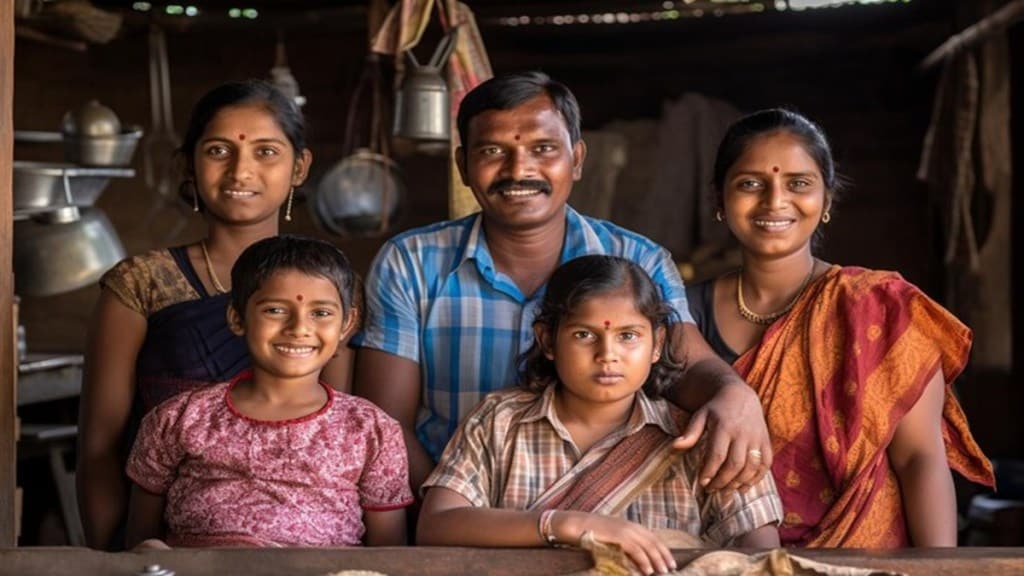By Lekha Chakraborty
Recently, Andhra Pradesh chief minister Chandrababu Naidu urged people in the state to have more children. Tamil Nadu chief minister MK Stalin also asked why bigger families should not be the norm. Lekha Chakraborty explains the political, economic, and social reasons behind these statements
Rising elderly population, declining fertility causes for worry
The United Nations Population Fund (UNFPA) and the International Institute for Population Sciences (IIPS) Mumbai recently released the India 2023 Ageing Report, which reports that India’s elderly population (above 60 years) will double to over 20% of its total population by 2050. Given the delimitation exercise (which decides the Lok Sabha constituencies) and the tax transfer devolution by the Finance Commission to the states are based on the population dynamics, the governments in the south Indian states are in a state of shock regarding the socio-economic and political consequences arising out of these public policy imperatives.
The latest data on population dynamics revealed that the elderly population in the southern states— Kerala, Karnataka, Tamil Nadu, Andhra Pradesh, and Telangana— is likely to rise by 6-7% of its total population between 2021 and 2036, as compared to states such as Uttar Pradesh, Bihar, Rajasthan, where the rise will be 3-4%.
The report also highlighted the declining fertility in the south Indian states. In India, the total fertility rate is at 2.0 per woman. But the 2020 data from Sample Registration System (SRS) shows that the fertility rate in Kerala, Andhra Pradesh, and Telangana was at 1.5, while in Karnataka it was 1.6, and in 1.4 in Tamil Nadu.
The fiscal costs of population dynamics
Population dynamics impact social security measures, pensions and rising health expenditure. Population is given significant weightage in intergovernmental fiscal transfers. The 15th Finance Commission’s tax transfer formula uses this criteria for determining state share: 45% for the income distance, 15% for the population in 2011, 15% for the area, 10% for forest and ecology, 12.5% for demographic performance, and 2.5% for tax effort. A recent working paper by NIPFP has called for integrating the elderly population data in the tax transfer criteria.
The fear around fiscal austerity measures
Inter-state disparity in the share of resources transferred from the Centre to the states is a big worry. The declining share for states where population is relatively lower has started affecting the fiscal space of these states. The volatility in the intergovernmental fiscal transfers constrains the fiscal space of states. This can, in turn, lead to “fiscal austerity” measures in these states by staggering the salaries, curtailing pensions and also through public expenditure cuts in welfare programmes.
The delimitation exercise
There is also fear over delimitation. Since 1947, the population growth in India has not been homogeneous across states – there are populous states and non-populous states. This uneven growth of population across different administrative units need a relook given the demographic transition. Articles 82 and 170 (3) of the Constitution stipulate that a delimitation exercise should occur every 10 years in concomitant with a decennial population census. However, as the population control has been “uneven” across India, this exercise should not harm the states which have controlled the population over the years.
Way ahead for public policies
The governments in the southern states have expressed concerns over this, asking whether “more children is the solution”. Will the women with fewer than two kids then be incentivised to go for more children? Of course, not. The state, through its public policies, does not have any say over women’s “bodily integrity” and cannot favour pro-natalist policies. It is to be noted that there are countries with “baby boom” fiscal policies incentivising women to have more children. However, such policies can turn out to be blatantly patriarchal in the Indian context, given the dual burden — both in the care economy and in the market economy — on women.
If the public policies – especially the decision of fund transfer to the states – is based on population, southern states are bound to lose out as they have effectively controlled the population over time through better education and empowerment of women. Therefore, a relook into the tax transfer formula is imminent. The 16th Finance Commission has a huge role to play in deciding the criteria of tax transfers and the weights to be assigned to the identified criteria, so that the southern states are not penalised for better performance.
The delimitation exercise after the next population census will therefore be a matter of concern. Increasing the Lok Sabha seats proportionally and equal share of Rajya Sabha seats may be a partial solution to this, which require further debates and discussions.
The author is professor at NIPFP, and governing board member of International Institute of Public Finance, Munich.
Disclaimer: Views expressed are personal and do not reflect the official position or policy of FinancialExpress.com. Reproducing this content without permission is prohibited.


